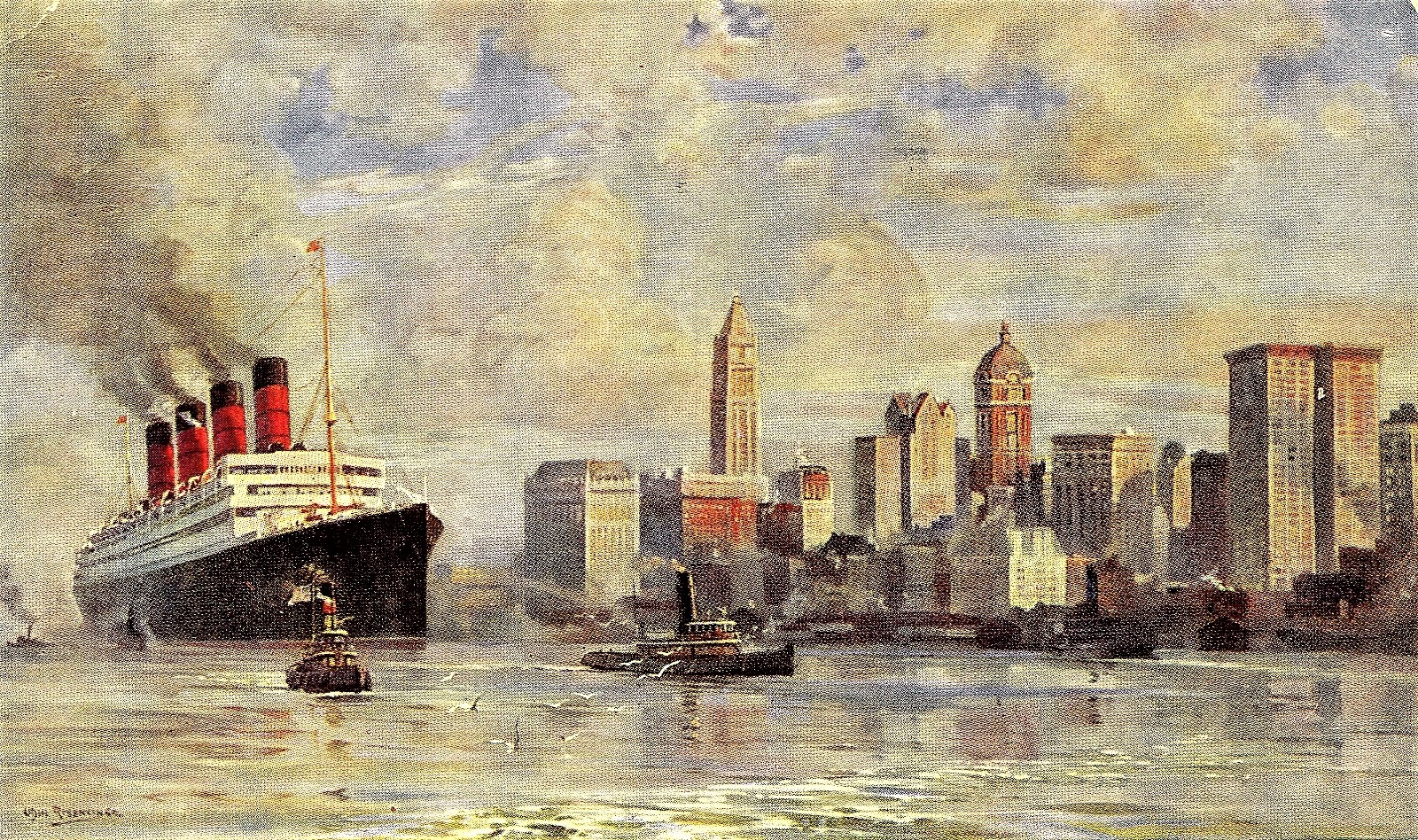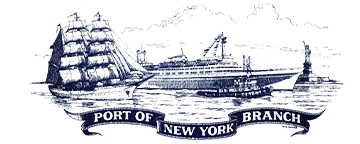

SAILING IN TWO DIRECTIONS IN THE AGE OF THE TITANIC
Presented by William Roka, Historian/Public Programs Manager at the South Street Seaport Museum
January 26, 2018 @ 6:00 pm
By the start of the 20th century, travel was big business. Millions of passengers were on the move, corporations spanned the globe, and ship lines competed to build the world’s largest moving objects, North Atlantic superliners. William Roka, the South Street Seaport Museum’s historian and public programs manager, and curator of the Seaport’s most recent exhibition Millions: Migrants and Millionaires Aboard the Great Liners, 1900-1914, led us on a tour of this extraordinary period in the history of travel.
The largest number of passengers were westbound travelers, the immigrants in third class, who sought economic opportunity and a new life in the United States. Immigrants formed the largest source of revenue for shipping companies. In order to efficiently move millions across multiple borders and to ensure their entry into the United States in the face of increasingly stricter immigration laws, shipping companies created a sophisticated transit system that reached deep into Europe and across the US.
While travel conditions for immigrants improved each passing year, construction of superliners such as Lusitania, Mauretania, Aquitania, Olympic, Titanic, Imperator, and Vaterland was not entirely for their benefit. Beyond national pride in building the biggest and best, shipping companies were motivated by a more common interest: profit. After immigrants in third class, it was first-class passengers who provided the greatest source of revenue. For only a hundred thousand annual passengers shipping companies would create floating palaces that rivaled the best hotels in comfort and amenities.
First class and third class, millionaires and immigrants, lives that were worlds apart on land, but would, for a brief time, almost touch aboard the North Atlantic liners.
(Artwork by Odin Rosensweig)

